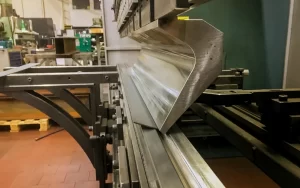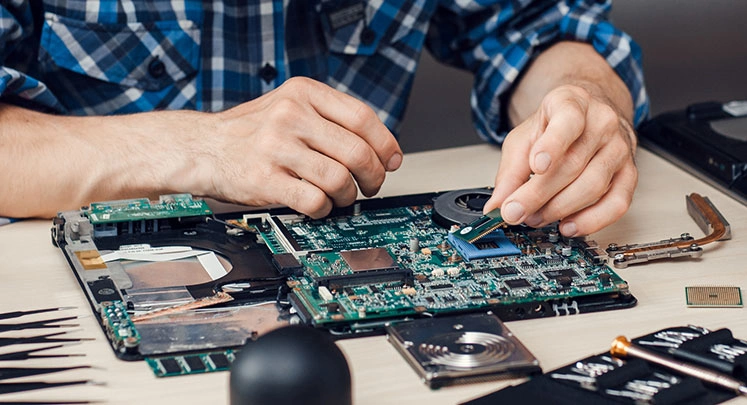In today’s modern industries, the importance of comparative metal forming machinery cannot be overstated. These cutting-edge machines offer a range of advantages that contribute to the precision and efficiency required in today’s manufacturing landscape.
By exploring the benefits provided by metal forming machinery, we can better understand its impact on the industry and why its implementation is crucial for success. From improving accuracy and productivity to meeting the demands of a competitive market, the advantages of comparative metal forming equipment are undeniable.
This discussion will delve into the key features, advantages, and future prospects of this advanced technology, leaving readers eager to discover the transformative potential it holds for modern industries.
Key Takeaways
- Comparative metal forming machinery plays a crucial role in modern industries, providing accurate and consistent results.
- It minimizes material waste and allows for faster production rates, enhancing production efficiency and profitability.
- With its versatility in processing different materials and high levels of precision, it improves quality control and competitiveness.
- The future of comparative metal forming equipment holds promises of advancements in efficiency, precision, and productivity, as well as integration with other technologies and sustainable practices.
The Importance of Comparative Metal Forming Machinery
Comparative Metal Forming Machinery plays a crucial role in modern industries, offering a multitude of advantages that contribute to enhanced precision and efficiency in metal forming processes. The importance of this machinery lies in its ability to provide accurate and consistent results, ensuring that the desired specifications of metal components are met with utmost precision.
One of the key advantages of comparative metal forming equipment is its ability to minimize material waste. Through advanced technologies such as computer numerical control (CNC) systems and automated processes, precise measurements and calculations can be made to optimize material usage. This not only reduces costs but also promotes sustainability by reducing the amount of scrap generated during the metal forming process.
Additionally, comparative metal forming technology allows for faster production rates compared to traditional manual processes. With the ability to automate repetitive tasks, such as bending, cutting, and shaping, the overall production time can be significantly reduced. This not only increases efficiency but also allows for higher output levels to meet the demands of modern industries.
Furthermore, comparative metal forming technology offers improved quality control. With the use of advanced sensors and monitoring systems, deviations in the metal forming process can be detected in real-time. This allows for immediate adjustments to be made, ensuring that the final product meets the required specifications and quality standards.
Key Features of Comparative Metal Forming Machinery
As we continue our exploration of comparative metal forming equipment, let’s now turn our attention to the key features that make this technology indispensable in modern industries. Comparative metal forming equipment offers a range of features that contribute to its effectiveness and efficiency in metal forming processes.
One key feature is the precision and accuracy that can be achieved with this machinery. Comparative metal forming equipment utilizes advanced technology and computer-aided design (CAD) systems to ensure precise measurements and consistent results. This level of precision is crucial in industries where even the smallest error can lead to significant consequences.
Another important feature is the versatility of comparative metal forming machinery. These machines can be used to shape a wide range of materials, including various types of metals and alloys. This versatility allows manufacturers to adapt to changing market demands and produce different components with ease.
Additionally, comparative metal forming equipment offers high production rates and increased productivity. These machines are designed to operate at high speeds, allowing for faster production cycles and shorter lead times. This feature is especially valuable in industries where time is of the essence and meeting deadlines is crucial.
Furthermore, comparative metal forming equipment is known for its durability and reliability. These machines are built to withstand the demanding conditions of industrial environments and can operate consistently over extended periods. This reliability ensures minimal downtime and maximizes productivity.

Advantages of Using Comparative Metal Forming Machinery
One of the significant advantages of utilizing comparative metal forming equipment is its ability to enhance production efficiency and accuracy in modern industries. This advanced machinery incorporates cutting-edge technology and precise control systems to streamline the metal forming process, resulting in increased productivity and improved quality of finished products.
One key advantage of using comparative metal forming machinery is its ability to achieve high levels of precision. The machinery is equipped with sophisticated sensors and computerized controls that enable it to consistently reproduce intricate shapes and dimensions with minimal variation. This ensures that each component or product meets the required specifications, reducing the need for costly rework or manual adjustments.
Additionally, comparative metal forming equipment offers enhanced production efficiency. These machines are designed to operate at high speeds while maintaining a high level of accuracy. This allows for faster cycle times, increased throughput, and ultimately, higher production volumes. By automating the metal forming process, companies can achieve greater output with fewer resources, leading to improved profitability and competitiveness.
Furthermore, comparative metal forming equipment offers versatility in terms of the range of materials that can be processed. Whether it is steel, aluminum, or other alloys, these machines are capable of handling various types of metals with ease. This flexibility allows manufacturers to cater to a wide range of customer demands and expand their product offerings.
How Comparative Metal Forming Machinery Improves Efficiency
To further explore the efficiency-enhancing capabilities of comparative metal forming equipment, it is essential to examine its impact on the overall manufacturing process. Comparative metal forming machinery is designed to streamline and optimize various metal forming operations, resulting in improved efficiency, productivity, and quality in modern industries.
One of the key ways in which comparative metal forming equipment improves efficiency is through its advanced automation features. These machines are equipped with sophisticated computer systems and sensors that can precisely control and adjust the forming process. By automating tasks that were previously done manually, such as material handling, die changing, and part inspection, comparative metal forming equipment eliminates human error and reduces the time required for these operations. This not only increases overall efficiency but also enhances the accuracy and consistency of the formed products.
Furthermore, comparative metal forming technology offers faster cycle times compared to traditional forming methods. These machines can perform multiple forming operations simultaneously, reducing the overall production time. Additionally, they can operate at higher speeds without compromising on precision and quality, allowing manufacturers to meet tight deadlines and deliver products to the market more quickly.
Another advantage of comparative metal forming equipment is its ability to optimize material usage. These machines can minimize material wastage by accurately controlling the amount of material fed into the forming process. With precise control over material flow, manufacturers can reduce scrap and optimize material utilization, resulting in cost savings and improved efficiency.
The Future of Comparative Metal Forming Machinery
The future of comparative metal forming equipment holds great promise for advancements in efficiency, precision, and productivity in modern industries. As technology continues to evolve, the field of metal forming machinery is poised to undergo significant transformations that will revolutionize the manufacturing sector. One key area of development is the integration of artificial intelligence (AI) and machine learning algorithms into metal forming machinery. By harnessing the power of AI, manufacturers will be able to optimize their processes, reduce waste, and improve overall productivity.
Another exciting prospect for the future of comparative metal forming machinery is the development of smart sensors and real-time monitoring systems. These advancements will enable manufacturers to gather important data about the performance and condition of their machines, allowing for proactive maintenance and minimizing downtime.
Furthermore, the Internet of Things (IoT) will play a crucial role in connecting different machines and systems, creating a seamless and interconnected network that can streamline production processes.
Additionally, the future of comparative metal forming equipment will see advancements in precision and accuracy. Cutting-edge technologies such as 3D printing and nanotechnology will enable manufacturers to produce complex and intricate parts with unparalleled precision. This level of accuracy will not only enhance the quality of the final product but also reduce material waste and improve overall efficiency.
Frequently Asked Questions
What Are the Primary Benefits of Using Comparative Metal Forming Machinery in Modern Industries?
The primary benefits of using comparative metal forming machinery in modern industries include increased precision, improved efficiency, and reduced costs. This advanced technology allows for the production of complex metal components with high accuracy and consistency.
How Does Comparative Metal Forming Machinery Improve the Efficiency of Industrial Processes?
Comparative metal forming machinery improves the efficiency of industrial processes by offering precise control, high-speed operations, and increased productivity. It enables companies to produce complex metal components with minimal waste, reduced downtime, and improved overall performance.
What Are Some Key Features to Consider When Selecting Comparative Metal Forming Machinery?
When selecting comparative metal forming machinery, it is important to consider key features such as precision, efficiency, durability, and versatility. These factors contribute to optimal performance and productivity in modern industries.
How Does the Use of Comparative Metal Forming Equipment Impact the Overall Productivity of Modern Industries?
The use of comparative metal forming Equipments has a significant impact on the overall productivity of modern industries. By providing precision, efficiency, and versatility, this machinery enables faster production cycles, improved quality control, and cost savings, resulting in enhanced productivity.
What Advancements Can We Expect to See in the Future of Comparative Metal Forming Equipmet?
In the future of comparative metal forming equipment, we can expect advancements in precision, efficiency, and automation. These advancements will lead to increased productivity, reduced costs, and improved quality control in modern industries.
Conclusion
In conclusion, comparative metal forming machinery has emerged as a crucial tool in modern industries. Its ability to enhance precision, productivity, and efficiency in the manufacturing process has made it indispensable in meeting the demands of today’s competitive landscape. By utilizing these advanced technologies, manufacturers can produce intricate and complex metal components, resulting in cost savings and improved overall efficiency. As the industry continues to evolve, the future of comparative metal forming equipment holds promising advancements and further improvements in the manufacturing process.
You May Also Like:






